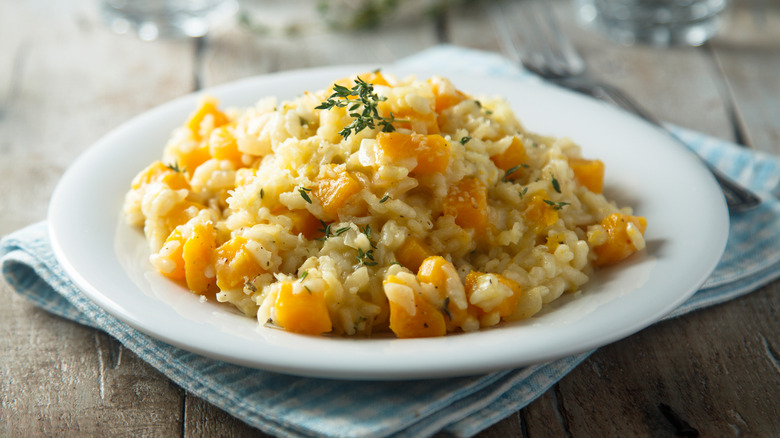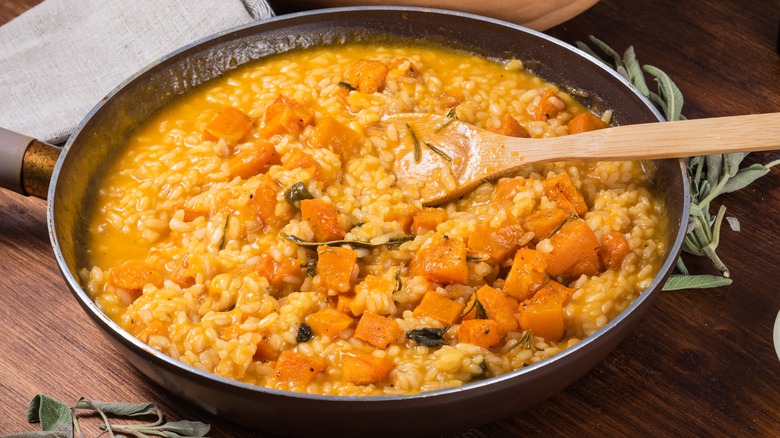Timing Is Everything When It Comes To Butternut Squash Risotto
The Italian people have a wonderful way of being able to extract the best possible flavors out of the simplest ingredients. Pasta carbonara: eggs, pork, cheese, and pasta. Pesto: basil, olive oil, garlic, cheese, and pine nuts. However, the perfect example of this symphony of simplicity and flavor might just be none other than the humble risotto. It is the preferred method of making rice in Italian households, per The Oterra, and it is easy to see why. This hearty combination of Arborio rice, broth, and cheese, while simple, serves as a blank canvas to a veritable cornucopia of variations, including everything from your standard mushrooms and roasted garlic to the more luxurious lobster.
Italians also like to cook seasonally, according to Italy Unfiltered, and risotto is not immune to this. It is an excellent dish for the colder months and will therefore pair well with a variety of different root vegetables.
One vegetable in particular, the butternut squash, stands out. It's a vegetable that lends a slight sweetness to the risotto without becoming overpowering. You'll want to be careful with your timing, however, as when you add the butternut squash to the risotto will dictate the consistency and texture of the final outcome.
Purée, chunks, or both?
It is a complete cliché to say that timing is everything, but when it comes to butternut squash risotto, as MasterClass explains, the timing really is everything. The question of when to add the butternut squash to the greater risotto is critical. This is not to say that adding the butternut squash too early will adversely affect your risotto. No, what really matters is what kind of consistency you want the squash to be when it comes time to serve. Do you want puréed squash, chunky squash, or a little bit of both? The timing will dictate which.
The New York Times explains that adding squash at the beginning of the risotto cooking process the squash will dissolve into the broth, become a purée, turning the risotto orange, and elevating the flavors. To avoid this, simply wait until nearing the end to stir in your squash chunks, per MasterClass. This way they will soften, but still retain their shape.
If you want the best of both worlds, you could do as Jamie Oliver does and roast your squash separately from the risotto. Once the squash is roasted, Oliver chops half of it finely and the other half chunky so the result is a beautifully sweet and creamy risotto with some nice nuggets of caramelized squash.

